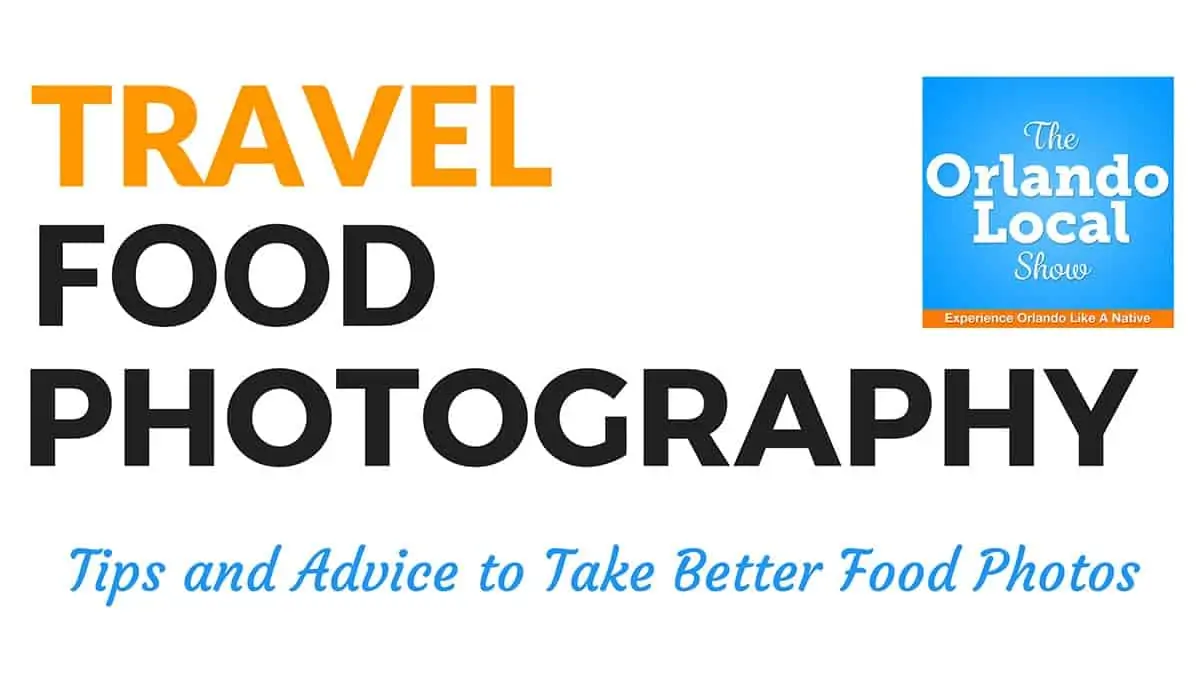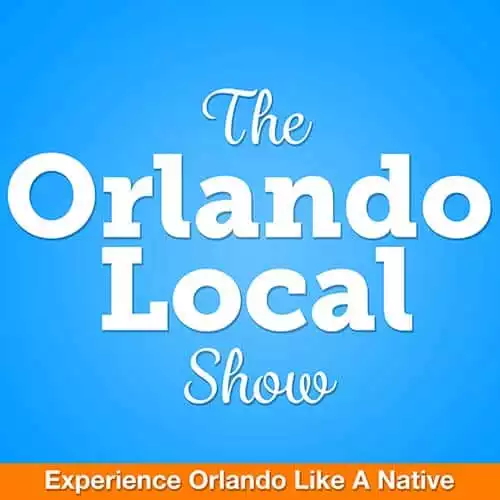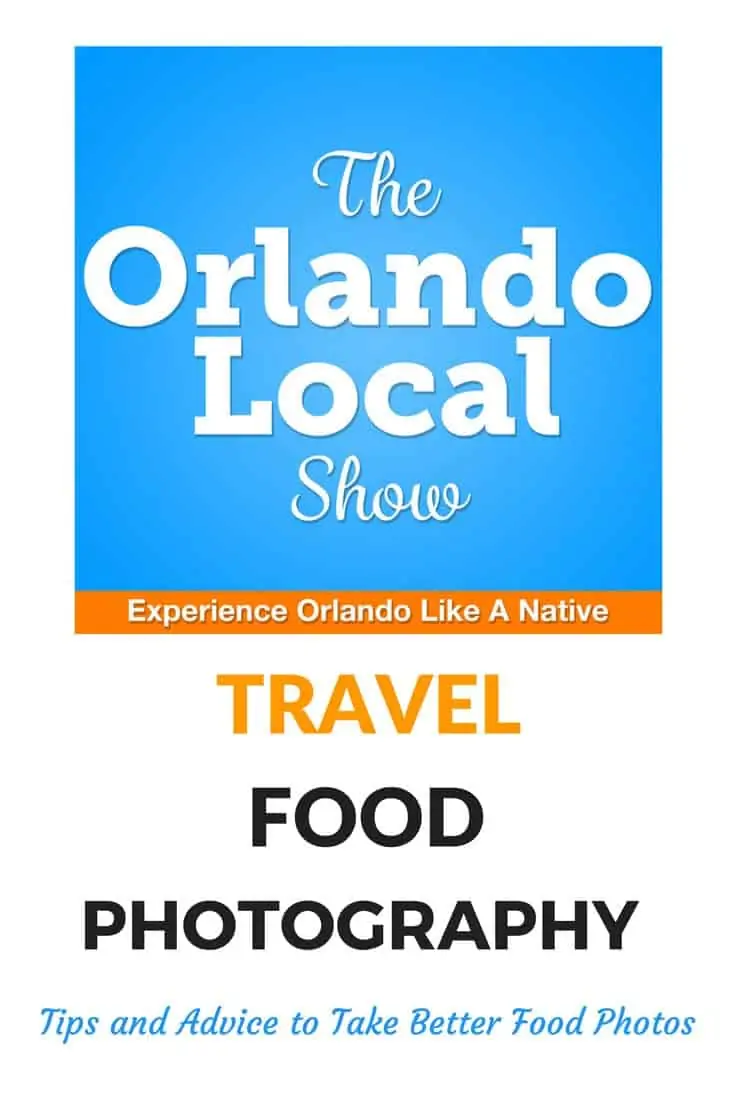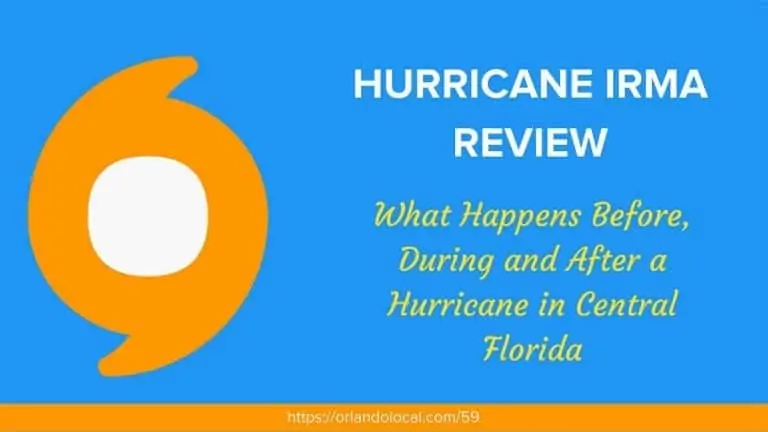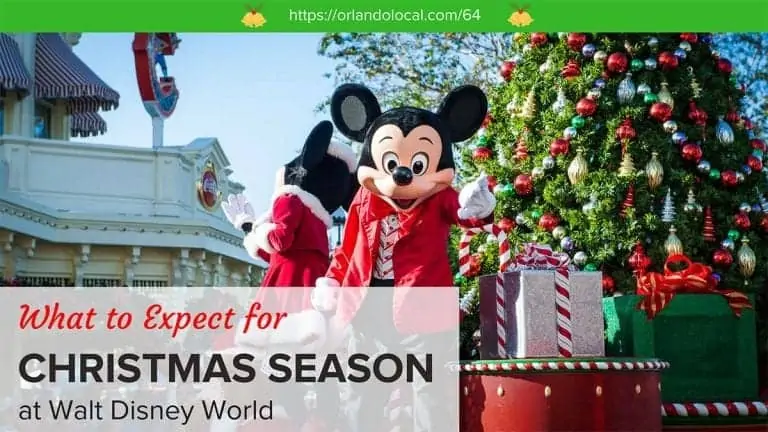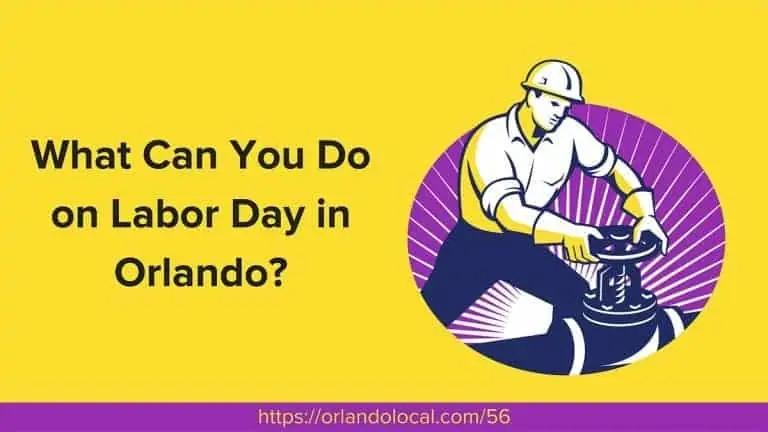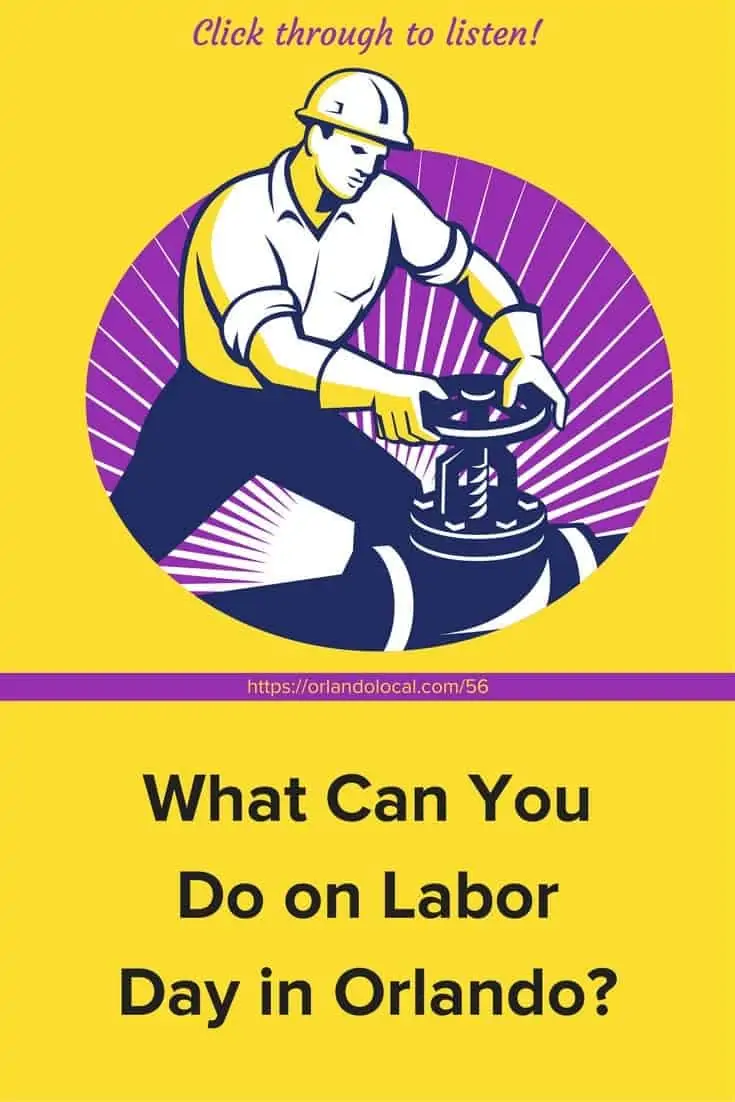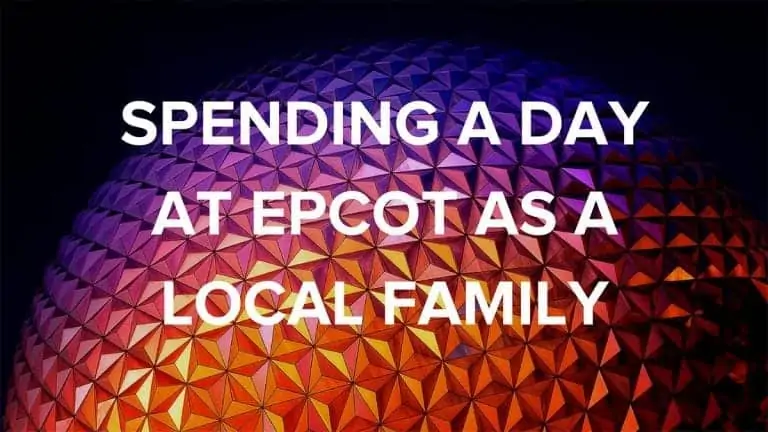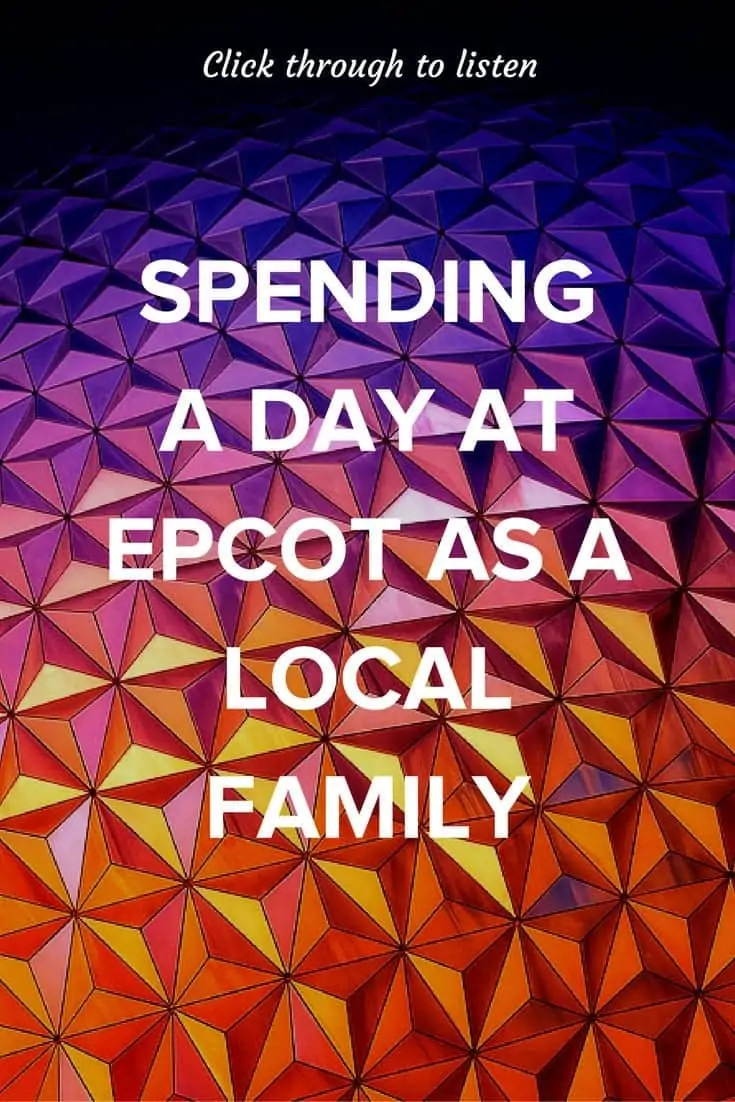Travel Food Photography Tips and Advice
We Share Our Travel Food Photography Tips to Help Capture Your Culinary Memories
Thank you for listening to The Orlando Local Show.
Today’s show about travel food photography tips is actually a show we originally shared on another podcast we product called The Photo Flunky Show.
Food is one of the most important things in our lives, and it’s a big part of our vacation memories. We wanted to share some thoughts about how to take better photos of your food in Orlando, or anywhere else.
We’ll cover tips on composition and angles, how to use existing light, eliminate distractions, enhance your backgrounds and enhance the presentation of your food.
You’ll learn how to use or add color to your food photography, when to time your shots and some requests you may want to make to keep your food fresh for your photos.
Finally, we’ll also cover how to get cooperation from restaurants and how to avoid annoying other guests.
Related Links
Here are some examples of our photos from reviews and media events on Orlando Local.
A Taste of the Nation: Orlando’s Charity to Help Feed Hungry Kids
Hard Rock Cafe Review: Orlando’s Premier Tourist Restaurant
Social Media Dinner at Hillstone
Epcot International Food and Wine Festival Review
Transcript
Hi, welcome to the Orlando Local Show, episode sixteen.
Hey, thank you for joining us on the Orlando Local Show. My name is William Beem.
Today we are going to do something a little bit different. We have another podcast called The Photo Flunky Show. Basically that is for my photography site at williambeem.com. We had a conversation, Lee and I both did, talking about food photography. It really is more geared towards people who are doing travel photography. Food is obviously a big part of our lives; it’s a big part of our vacation experience and we thought that this would be an interesting show to share here on Orlando Local. So I’m not going to create a new one. We kind of thought about it: should we go ahead and re-record this? And we thought, you know what? We really like the show as it is. So with that in mind, I’m going to actually put in the Photo Flunky Show episode here and let you listen to that.
And of course you can find show notes available at orlandolocal.com/16
We’d love to have your comments and feedback. If you’ve got questions about food photography for your next visit, please let us know.
And for right now, here is the Orlando Local Show, talking about food photography.
THE PHOTO FLUNKY SHOW (Episode 48)
Welcome to the Photo Flunky Show, Episode number forty-eight.
Today we are going to be talking about food photography tips and advice and we hopefully have a couple of ideas for you. This is not necessarily going to be for you shooting food in a professional studio environment for a client. This is more or less if you are going to be covering food photography as media or even if you just want some good memories of your vacation photos and how to shoot food.
William: Hi, my name is William Beem.
Lee: Hi, my name is Lee Beem.
William: And Lee Beem is the one who really does most of the food photography here.
Lee: Everybody’s food gets cold while I stage it.
William: Before we get started with that I just want to let you know that you can find show available williambeem.com/episode48.
And of course you can find all the episodes at photoflunky.com.
We would really appreciate it if you would check in with us on social media. We are available on Facebook, Twitter, Instagram and Pinterest and you can find the links to all of that at williambeem.com/episode48.
Alright, so let’s get down to it, Lee. Why do you like food photography?
Lee: There is just something about taking photos of food that is a memory of something you do all the time. It is such a big part of life, socially, family time; it’s something enjoyable and yet I think because we do it every day, we fail to capture those little memories. I realized that one year when we were on vacation. One of the biggest portions of the budget that gets blown when you travel somewhere on vacation is actually on food.
William: It is a big part of the budget. It’s a big part of your travel or vacation experience and like you said, it’s a big part of life. And people love food photos!
We found this out particularly with our Instagram account that we have for Orlando Local. We can post certain things up there and it will get some attention, but you post food up there and everybody resonates with food.
Lee: Yes. Absolutely.
William: And it’s just because they want to know. That looks good, where did you get that? I just like the way that looks. I think I want to have that for dinner tonight ... you know, something along those lines.
Lee: That’s true and even on my personal account as soon as a food photo or a dessert photo goes up, anything that looks colorful, decadent, interesting or different just garners so much attention.
William: When you’re doing your food photography, what are you really doing? I know we’ve done some of this with the iPhone, I know you’ve done some of this with your DSLR. Let me know a little bit about from the gear side, why do you choose one over the other and when?
Lee: It’s not so much that I choose one over the other. I think it is planned my preference for taking photos, and I think it’s a mindset, but you are going to get a better quality photo with a DSLR. But that doesn’t mean you won’t get a great quality photo with a point and shoot or with an iPhone.
Honestly most of my food photos are actually taken with an iPhone because I’m not planning to go out as a photography trip. I’m planning to go out and eat and I’ve got my phone with me and I’ve learned that you can get some good photos with it.
William: Now we’ve had a couple of exceptions. For example, we went to Taste of the Nation as media for Orlando Local and we both went out there. I went with my DSLR and you went out with your iPhone.
Lee: I did.
William: We were kind of working a tag team. I was taking the food photos that night for the page, but you were still out there, even though you were networking with people; you were getting to know people, which you do much better than I do. I’m really hesitant to go up to strangers and say hi.
Lee: Yes but he’s so good when he starts talking.
William: Once I get started I’m OK, but it’s that initial push over there. But even though you were out there doing the networking, you got a lot of opportunities that came up just with your iPhone at that event.
Lee: I did and it’s very versatile. It’s small and it’s not intrusive in any way. Anything that’s big – you think of a big camera – is a large object that stands between you and the other person and it forms, I think subconsciously, almost a barrier where people want to step back out of courtesy and respect most of the time. They do not want to get in your way.
When you are standing there with a phone I think everyone is just so used to iPhones coming out and snapping shots that nobody really knows what your skill level is. I guess nobody even thinks about that.
When you come in with a phone it’s not intrusive and you can angle the phone into a small space, take your shot and walk away. Nobody would even know you had taken a photo.
William: No, because people are used to seeing phones out all the time. Everybody is taking photos of everything these days with their iPhone or Android phone or whatever they have.
A DSLR is a little bit different. It attracts attention. But there are times that we’ve gone off to review a restaurant for Orlando Local and you’ve brought your DSLR.
Lee: I have and I think if it’s planned and it’s something we are intending to put up and we have had some time to think about it and prepare for it, I absolutely want to take the DSLR. That is always going to be my first choice if I have the opportunity to plan.
However, having said that, if I find myself somewhere where there is an opportunity for an interesting photo or a nice memory I’m not going to forego that opportunity just because I don’t have a big camera. Then the iPhone comes into play.
William: Alright, well let’s get down to how you go about this. No matter which camera you’ve got, whether it’s going to be the iPhone or DSLR you have certain things that you look for taking food photography in a restaurant or at an event. So these are not things where you’ve got a food stylist and you’ve got studio lighting and you control all the aspects of it. You are basically getting what is presented to you.
And granted, restaurants and chefs and so forth want to put their best foot forward when they are presenting something.
Lee: Yes.
William: So we are not going to McDonalds and getting something out of a cardboard box. We are going to a nice restaurant and they are bringing it out because they want the food to look appetizing as they put it down on the table.
Lee: And the presentation looks good as well in a restaurant. If you go to a restaurant and you are sitting down at a table, you’ve also got things that are on the table that set the scene and kind of echo the theme that runs through the restaurant and most of those things can become an integral part of your picture.
William: So the food comes out. What goes through your mind? What do you want to do when you first see something?
Lee: I want to get the photo as quickly as possible. There are two reasons. The first one is obviously everybody else is sitting there and wants to eat their food before it gets cold. But the other thing is that when food is freshly cooked and it’s still hot out of the oven, it’s got a bit of a sheen to it. It’s almost glossy with the heat. You’ve got natural oils and the moisture on there and it looks really good.
As it stands it kind of loses some of that vibrance.
William: That’s true. You’ll look at food as it comes out and then maybe further down your meal you’ll see that it’s just not quite the same.
When it comes out – I’m thinking of something when we went to one of our favorite Tex Mex places called Chuy’s this weekend – and I got fajitas. Well the fajitas come out and they’re sizzling, they’re moist, there is steam coming off of them. The steam can get in your way a little bit, but it makes a nice, good background.
Lee: It does.
William: After those have sat there and I get down to my third tortilla shell they are not lively. The meat doesn’t look moist the way it did when it first came out and everything just kind of dies down, so you’ve got a time limit, really, when something comes out. Especially if it’s a dessert. They come out and bring a hot cookie with a nice scoop of ice cream on top of it, that ice cream is going to start melting.
Lee: Oh yes. You want to get that really quickly!
William: So pretty much any meal that you get, even the salad I guess, is going to look its best the moment it hits the table.
Lee: Oh, it absolutely does. And that is the time that you want to get it, bearing in mind a lot of the time the first shot is not the only shot you’re going to take. I’m going to snap a couple of photos at least of the same dish and I’ll probably turn it for different angles and see what works best.
William: Not only do you turn the food, but you also rearrange things on the table.
Lee: I do and sometimes I shift things along on the plate because I like to get quite low down with my food. I know some people have a style where they shoot from above, others sit as if they were about to eat it, as the eye sees it, and they take the photo like that. I actually like to get my phone or my camera right down to plate level and take it across the plate.
Now that also means that there are different things in the background that you wouldn’t anticipate because they are not necessarily in your line of vision behind the plate of food as you sit. So you need to look very carefully in the viewfinder or on the screen.
William: So basically the old maxim is that backgrounds matter.
Lee: They matter a lot to me. You’ve seen me moving things and telling someone to scoot their arm and it’s usually poor Tové because you and I like to sit side by side when we eat.
William: But sometimes you’ll put maybe a beer bottle behind it to block something else out. Or do you want the color from that as part of your background?
Lee: It could be either. Look, Mexican food isn’t exactly vibrant and colorful. It’s all kind of gold and warm colors, but that’s it. There is not a lot of green in it unless you’re getting something with little garnishes but generally I’m just using that as an example.
Some food or a steak with some potatoes on the plate is not necessarily a colorful dish. So if you’ve got a nice, bright drink or a glass tumbler, those things are great to put in the background. Even some hot chili peppers that are sitting on the table; dried peppers – that works as well.
And it’s just really to bring some color into the shot.
William: So it’s not really just blocking things out. You’re adding color when you can. I’ve told you this before, but as my mother taught me, food is brown because that’s the way you fry it.
Lee: That’s absolutely fine on the plate, but then you want something in the background.
William: You’re right. You want some color. You want some interest. So if you’re looking for the sheen on the food, you’re looking for maybe a little bit of sizzle if something is coming out that hot, or you’re looking for some color. In some cases when I’ve been doing this, if you are near a bar and there are always lights back there in the bar, sometimes those lights are hotspots that come in and you kind of have to block those out of the way.
Lee: You do, and other times the lights from the bar, depending on the angle from which the light is shining, can sometimes get the colors in the background and this again depends how you position your food and if you are able to do it you can actually get the colors from the bottles. So it can work for or against you.
But menus are also a great way to block something out that is in the background. It could be a hotspot, it could be somebody standing there who won’t move in a bright red sweater. It could be anything, but you really need to work with what you have. I don’t take things with me. It’s almost like a little challenge to see.
William: It’s like a scavenger hunt.
Lee: It is. But the other thing is I like my photos to reflect the experience in that environment on that day and in that place. So by using things that are already there it doesn’t lose the integrity of the environment or the atmosphere.
William: Now one of the things that you are going to find in the environment of course is the lighting that is there. Depending upon the restaurant, you may be near a window and get some nice daylight coming through, or some of the restaurants we’ve been to like House of Blues or Hard Rock Cafe when we did those reviews – those are very dark environments. They are going to be very yellow light environments. How does that affect your food photography? And how do you correct for some of that? Or do you?
Lee: Some of them I do. I think using the little eye dropper and the white balance in Lightroom and I do this on Lightroom Mobile as well. you can do that. It’s usually not my go-to photo editing tool just because it’s a little bit slower (on the phone) but you do have a lot of capabilities in there if you’ve got the mobile app. If you’re a Creative Cloud member you can just sync your photos up and do it on there.
William: That’s a very nice thing. Once you get the white balance right on one, then you can go ahead and sync it to your other photos so you’re kind of covered for shooting in a particular room or lighting environment.
Lee: That’s right.
William: Now I know you said that you don’t like to shoot from above, but I do remember at Hard Rock Cafe you were standing on the seat shooting down.
Lee: I was and it’s not the first time I’ve done it. I’ve actually done it at House of Blues as well. It was one of the first visits we had and there were so many things we wanted to try and we ordered side orders or starter portions and in some cases they were kind enough to make us a miniature portion of something so we could try different things. We set it out like our own little personal buffet and we had a booth that they had given us; it wasn’t very busy. But there was myself and this young child and there was almost no space on the table for this food. It was quite embarrassing! I think people were wondering where the other four guests were.
And to get it in I had to stand up on the table. At Hard Rock it was a similar thing. We had a platter with so many .... it was a really large starter platter.
William: Yeah, the appetizer platter.
Lee: First of all it was to get everything in, but the other thing is that I had taken some photos from the side and what happens is because I was shooting a little bit wider just to get rid of some of the background stuff, there was nothing else you could do. But it meant that you weren’t getting all the food in focus. So for me to get an overview of everything that was on there, if somebody wanted to see, I really did need to get up from above. So it was not the most artistic photo, but as a documentary picture to illustrate what was available on that platter, it was necessary.
William: I actually kind of like some of the shots like table settings from above, but when you are doing food photography you are not necessarily trying to get the whole plate in. You would much rather get in close.
Lee: I like to get in close. I usually have a corner or a portion of the plate of food. I very rarely shoot the whole plate. Now if you just think of perspective, you have a plate and most of them have a rim around them. Now that rim might just be an inch thick but when you get up close, that’s the first part that hits the lens of the camera and it can end up taking up half your frame. So you really want to move beyond that before you start shooting food. So I do not mind – in fact I deliberately – chop off some of the food.
I try and go for something that’s either a little bit bland or there’s a lot of it. So if there is a huge portion of fries, I might have the fries as the foreground because I’m so close it’s going to blur slightly, and then focus on the wings or the steak that’s behind it. So I would get midway through the fries before the frame begins.
William: One of the things I like about that is it’s kind of like portrait photography where you’re doing a headshot. It’s OK if you cut someone’s head off. You don’t necessarily have to show the top of their hair. And you’ll see this in magazines all the time and the reason for that is you want to get closer to their face; you want to get closer to their eyes because that’s the part that’s drawing you in.
And I think what I see in your food photography is you’re taking your compositions close. So you are kind of cropping in-camera to the part that is what you think is going to be most interesting about that scene.
Lee: Yes, I do.
William: If you try to show everything it’s like, well, it’s OK, it’s there. But if you get in on one thing like a dessert. I remember we’ve done this. I’ve seen you do this with cornbread or with a brownie and ice cream. You don’t necessarily show the whole thing, because the whole thing is not that interesting. You show one slice and get close and put a fork right next to it.
Lee: I like to stick a fork in it or a spoon or something. I actually like to get a picture of some of it eaten. It’s almost like you don’t trust a cook who doesn’t taste their food; it’s where I’ve taken a photo of something and I’ve got to show you what it looks like inside. Yeah, we can see the top, but is it fluffy and light inside? Is there texture and color inside? Was it dry? Was it sticky?
I think you can tell more of the story of the food if you show more of the story of the food. Food is great to look at it, but people don’t go to a restaurant just to look; they want to eat it. And that kind of translates into the enjoyment aspect of the food.
William: I think that’s one of the reasons why your food photos are very popular; it’s simply because you understand what the person really wants out of this, even if they don’t know themselves. You are showing them the close-ups. This is really good. You should want this. And it looks appealing and appetizing when you get that close.
Lee: I hope so. I mean, I show it as I feel it. I’m looking at a chocolate brownie with ice cream that’s starting to melt down the front of it and I’m just thinking, I’m going to eat that right now! And that is what I want to photo to show; that I am going to eat that. If you want it, try it.
William: Like, I need to eat that before the ice cream is gone. You put ice cream on something hot and I think, no! That is a waste of ice cream. You’ve got to eat the ice cream before it melts.
Lee: I think once, maybe twice, I remembered to ask for ice cream on the side and that was specifically for a photo. You don’t like ice cream melting on your food. I actually don’t mind it – ice cream on hot food. But if I want to take a photo I need the ice cream to be added when I am ready to take the photo.
William: It’s not that I mind ice cream with hot food. In fact I prefer it. Thanksgiving is going to come around and my mother is going to make an apple pie and there’s going to be vanilla ice cream there. I like the sensation of both hot and cold at the same time when I’m eating it, but I do not want the ice cream served on the hot apple pie because just like you’re not ready to take a photo, if I’m not ready to eat it and it’s already started melting, that means that suddenly something triggers in my brain that I’ve got to rush through this.
Lee: It also destroys the texture once it starts to sit there for a while.
William: It really does and so it’s bad for photos and it’s bad for dining. It looks good together, but that’s why a lot of food photography has things that maybe you wouldn’t eat. I don’t know if you were aware of this. Some of the commercials with photography of food, shooting cereal milk in there it’s actually like Elmers glue.
Lee: Oooh.
William: Well, it’s not going to get soggy. The stuff is going to stay on top, but it still looks white. Ice cream that’s in there is actually mashed potatoes with food coloring.
Lee: Yeah, I’ve heard about that.
William: One of the things when I was doing a little bit of food photography, I was doing more of a studio environment and I really enjoyed having backlit food with some white poster board – kind of like a bounce card – to light the front. But I really like having backlit food and having a little bit of a shadow come forward. To me that just made it more appealing.
Inside of my head, trying to think through the psychology of that, I don’t know why. But to me it looked better. So are you looking for angles of light when you’re taking your food photography or is it simply because of the fact that if we’re in a restaurant or if we’re working as media, you kind of get what you get?
Lee: I think for me it’s more that I get what I get. I see the things in the moment and you are better at thinking ahead. Light is something that I struggle with and this is probably going to be a primary example why, but I don’t look to see how I can make the light work for me. When I spot a problem with the light, I look to see how I can solve it. So unless I see a glaring issue ...
William: Well, you’re thinking about the light. You’re just thinking about it at a different stage than I am.
Lee: Possibly. I’m not going in there and thinking, OK how is the best light for portraying this food? I have a look and think, OK it needs to move here or it’s a bit dark here, but if not, I don’t give it a second thought. I just take the photo and then think maybe I need to shift it.
William: You’re going to laugh at me for this but this shows how finicky I am about what kind of light I get for my food photography.
I was in Las Vegas and I went to Bouchon for breakfast. I went there with a very specific thing in mind and they have seating up against the windows and there was only one seat left. I went up to the hostess and said I’d like a seat by the window and they take me back there and give me a seat that’s not by the window. Right behind me I see the seat I want so I said, “Excuse me, but I want that seat.”
She said, “I’m sorry, but we can’t give you that seat.”
I said, “I don’t understand. Why can’t I have that seat?”
And as I’m having that discussion with the hostess, the other hostess comes in and seats a couple there at the table and I’m thinking why are we having this conversation? I was here first, I asked for the window and I really wanted the window light for the photography for the food. They have very beautiful food there.
Anyway, get around my little discussion with the hostess, I walked out. I didn’t eat there because I couldn’t get the light I wanted to take photos of the food.
Lee: Actually, I can understand that. If you went, you went to eat, but you went specifically to take photos of something and you were ordering that something to get a picture of it.
William: And I knew what I needed to get the shot; at least the one that I had in my mind. I don’t understand why I wasn’t allowed to sit there. Maybe it’s because I was there by myself.
Lee: I was going to say, I’ve been there. Yeah.
William: Sometimes you go to these nicer restaurants and they look at you by yourself and think, just shuffle him off to the back.
Lee: I’ve had that with Tové. I overheard somebody in a nice restaurant – one of the staff – talking about us. They hadn’t moved far enough that we couldn’t hear, saying what a waste of a table to put a mom and her kid ....
William: See that’s a horrible thing. There are occasional restaurants where I know I’ve been treated poorly by the hostess simply because I was there by myself. I’ve never been back to Bouchon either. When we were there on our honeymoon in Las Vegas I didn’t take you to Bouchon because I’m still upset with them.
Lee: That’s OK. We’ve never been back to the other restaurant, which is not a bad restaurant, but it kind of stings and sticks in your mind.
William: Well, Bouchon isn’t a bad restaurant; it’s a wonderful restaurant – if you are treated nicely! But I guess I kind of got on a bit of a rant here, but that’s my rant for Bouchon. I’ll never go back there simply because they had an opportunity to treat me nicely and they didn’t.
Lee: I do understand where you’re coming from with that. If you have a shot in mind and you’re not able to get the shot, why stay? You were paying money to dine there.
William: Well I would have if I’d stayed. But let’s go back to the same scenario of the table with the lighting. I didn’t get the table with the light that I wanted. Would you have asked for that table by the window ahead of time, or would you have simply taken whatever table you were assigned and then made it work with what you got?
Lee: I would have asked, but I probably would have just made it work with what I got, if I were taking the photos with my phone.
If I had planned it ahead, I probably would have done exactly what you’d done because I am more fussy and I get into a different kind of photography mode when I’ve got the big camera to what I do with my iPhone.
William: What else have you got in mind when you are taking photos? We know what your composition is; you want to get in tight. We know that you like looking across and we know that you want to put a fork or spoon or something that kind of shows this is ready to eat. What else do you have in mind that makes your food look enticing?
Lee: I think the angle. I tend not to shoot ... I tend to angle things slightly so the phone or camera is leaning one side or another. So it’s kind of being shot from an angle; not dead on. It’s not always, but I would say probably the majority of the time and for some reason it just seems to be my style. I was always like that with art, I was like that with scrapbooking and things and it seems to be something that I do. So it’s reflected in the photos.
Sometimes that is tricky; it means moving things around specifically for that angle.
William: So when we’re talking about an angle, you’re probably sitting at a table looking at your food at roughly a 45 degree angle. Are you trying to get down lower with your angle?
Lee: What I’m saying is I actually spin the plate. If you have a plate, like a rectangular plate, the long edge is kind of sitting horizontally in front of you. I will actually turn that so that it’s at a diagonal, pointing to the left or the right, away from me.
William: Alright, so you’re making some lines and you’re making it visually more interesting and appealing with those lines.
Lee: I am and I don’t actually think about it in those terms. I guess I don’t break it down in my mind because that’s probably what I’m doing subconsciously. It’s not something I think about; it’s something that I automatically do. But there are times when you can just look at something and you can see if you like it and maybe it’s because I’ve done it for so long, you start shifting things until you get them where you want them.
William: Well, you’ve got this art background and there are a lot of things that I think are in the back of your mind that, like you said, you are not consciously thinking about. But let’s say that you go out to a restaurant and they’ve got square plates or rectangle plates. They set it down to you with the long end going horizontal to you, that’s what most everybody sees.
Lee: Yes.
William: By changing it you are giving a different view of the food. It kind of takes them out of their comfort zone.
Lee: It does.
William: And it makes them actually look at the photo and the food simply because it looks different from what they see when they sit down.
Lee: It does, but I’ve also always been one to move around my photos or to move the things in my photo until I get them where I want them. If I don’t like it and I can’t move them then I’ll move myself.
What I do a lot of the time is even if I’ve shifted the plate, I don’t necessarily shoot things head on, I tend to still move or tilt my body in one direction or another, just to get the angle I want. And also to get the settings or to avoid shadows.
Shadows are a bigger problem sometimes than light in a restaurant.
William: They certainly can be and that’s why I am very careful to limit shadows and that’s why I like backlit food. I know the shadows are coming to me and I can compensate for that a little bit with bounce light.
But as far as angles, one of the things that I’ve done in the past is I will tilt my camera to get a little bit of a different angle if I’m looking at it from above; not necessarily straight up, but not the 45 degree angle that most people see. I’d say somewhere between table level and half way up to a 45 degree angle is where I like to take my shots unless I’ve got the room that I can take a perfectly head on horizontal photo.
So when we were at Taste of the Nation for example, they had a bar where I took the shot of that little sandwich and that one was just straight off the side of the sandwich.
It’s not the way you see your food and that’s why I wanted to do it that way.
Lee: It’s almost like you picked it up and held it up in front of your face and looked at it.
William: Exactly. Yeah, you could see everything that was there, you could see the sandwich from top to bottom. You didn’t look down on it in that photo; you looked straight at it and it’s like it’s almost daring you to pick it up and eat it.
Lee: Yes. See I like to get not completely straight up and horizontal, but probably closer than the average person does it. You’ve seen me with my phone. I sort of pull it right down almost onto the plate. Then I tilt it slightly. It just depends. It’s what I’m trying to capture on that plate.
William: OK, so we talked about food, but how much time do you spend shooting beverages?
Lee: I like beverages. I think beverages are sometimes even more fun than food, especially if you’ve got a big group. The biggest challenge with beverages and it’s something that comes into food photography as well; the one thing that really gets me uptight is when I’m trying to take a picture and someone is putting down napkins or there is a straw or a straw wrapper or a piece of ....
William: Something that is distracting.
Lee: Trash.
William: Yeah.
Lee: I don’t want to see trash in the background of my photo. I don’t want to see the corner of somebody’s napkin. Especially when they’ve got those brown recycled paper types of things. I don’t want to see rubbish in there, for want of a better word!
William: Well, it’s not appetizing if someone else’s trash is in the background.
Lee: It’s not even that it’s dirty trash. It’s just the paper, but I don’t want the clean trash either and I’m very funny about that.
William: But it draws the eye away from your subject and that’s part of the reason why I think you like to get tight on your subjects. There are no distractions. You are eliminating things that would steal the viewer’s eye from your subject.
Lee: I am. But about the drinks, I think drinks are colorful. Drinks come in a variety of colored bottles and I love the way, especially with glass, light shines through glass. A lot of drinks are served with a slice of lemon or an orange or a piece of fruit in them. You’ve got your cocktails, you’ve got the frost and the condensation on some glasses and sometimes the salt crusted rim. And those make absolutely beautiful photos. I really need to spend more time sitting at the bar and drinking.
William: Well, there, you’ve heard it. We’re going to spend more of our time sitting at the bar and drinking.
Lee: It’s all in the name of photography. It’s for the benefit of you.
I’ll send you a link to the photos, how’s that?
William: I can see my American Express bill is going to be up next month! But we’re going to have a very happy time.
Lee: Oh yeah!
William: OK. That is pretty much all we want to go over today but one of the things I wanted to bring up is this isn’t for commercial photography. This is kind of like for enjoying your meals out, your vacation time and one of the last tips I wanted to leave you with is talk to the people at the restaurant.
Let them know what you are doing. And if they can accommodate you I’ve found most of the times that they will.
Lee: They will, yes.
William: Particularly if you go there maybe when it’s not their busy season. When it’s a busy time, servers want to turn tables over. They want to get their tips and they want to move the table out so the next person comes in. That’s their money. You don’t want to go try and take up a table and order a bunch of things that you are just going to take photos of because it’s not really going to get them a good tip.
Go there between lunch and dinner for example. Like you want to go there at three o’ clock in the afternoon when it’s not that busy. Maybe that’s a better time. And maybe you’ll get a little bit more co-operation from them.
Lee: One more thing I’m going to say if you’re using a phone or a camera, a flash in a restaurant is not a good idea. You are just too close to the food. Unless you take a photo of the restaurant. Specifically food photography and food you’ve ordered that’s on the table or you’re sitting at the bar, don’t use a flash.
William: No, I’m going to take that one further because it’s annoying to other guests when your flash is going off. Now don’t get me wrong. If you go to some place like Hard Rock, people are out there with their iPhones and flash all the time because they don’t know any better.
But if you’re trying to take a nice photo of something, use the available light. If you can get a window that is beautiful light that can come in and really make the most of your food. Particularly if you sit outdoors. If it’s not summer time in Florida when I melt, sitting outdoors is a great place to get beautiful light on your food.
I’m thinking this is kind of ... you’re there to eat first, but when the food comes, take advantage of it. Take some nice photos and maybe you’ll get some nice memories to go along with it.
Thank you very much for joining us on the Photo Flunky Show. This has been episode 48 so go to williambeem.com/episode48. We will give you a free transcript of the show.
You can find links there to subscribe. You can also find links there to subscribe to our news email digest. And of course if you want to find more shows, go to photoflunky.com You’re going to find a player there that will show you all the different shows that we’ve done so far. And of course we really appreciate you.
Thank you so much. We’ll see you next week.
Get Free Updates of The Orlando Local Show
The Orlando Local Show podcast library is here for you to search and listen to helpful episodes about Orlando.

